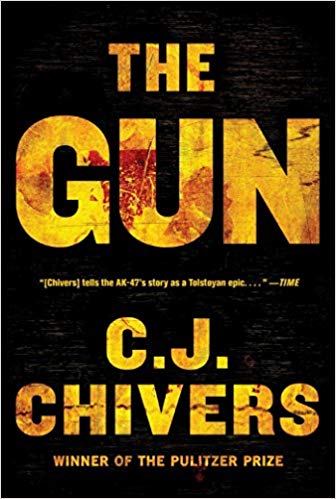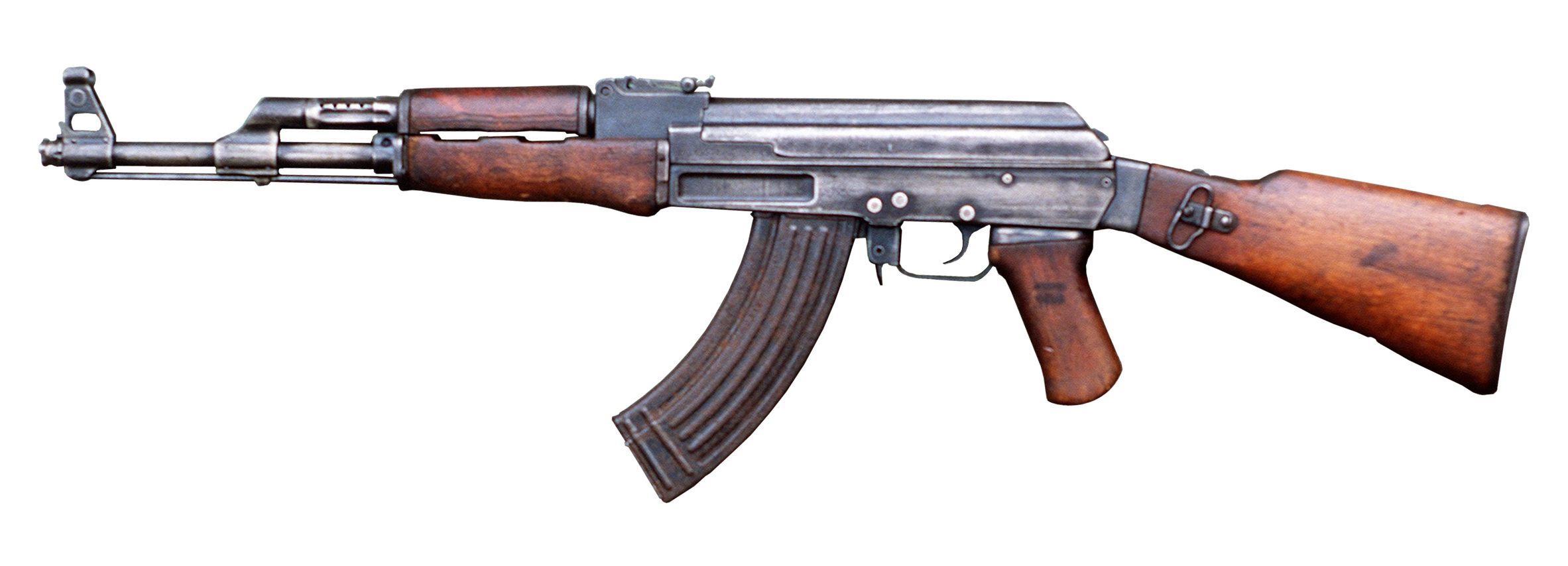 A trip to the main library took me down to the military science section looking for new additions of Osprey Men-at-Arms booklets. Instead, C. J. Chivers’ The Gun caught my attention. This is a history of the AK-47 assault rifle. Chivers served as an officer in the United States Marine Corps. He is a writer for The New York Times and has won the Pulitzer.
A trip to the main library took me down to the military science section looking for new additions of Osprey Men-at-Arms booklets. Instead, C. J. Chivers’ The Gun caught my attention. This is a history of the AK-47 assault rifle. Chivers served as an officer in the United States Marine Corps. He is a writer for The New York Times and has won the Pulitzer.
The Gun starts with the invention of the Gatling gun in the U.S. Civil War. He gives biographies of Gatling and Hiram Maxim detailing the impact of automatic gunfire in colonial campaigns and World War I. A biography of Mikhail Kalashnikov is included and the process of the development of the AK-47 rifle.
After WW1, militaries continued using bolt action rifles that generally held 5 cartridges. The U.S. Army had a continued emphasis on accurate rifle fire when the tactics had changed of throwing lots of lead to suppress machine guns until they were dealt with.
A little history is given on the German Sturmgewehr 44, the first assault rifle developed by the Germans in WW2. The U.S. M-1 Carbine is giving passing mention along the way. Simonov and the SKS rifle is mentioned a little.
The AKs debut in putting down an East German uprising and then the Hungarian revolt of 1956 and how on partisan got his hands on an AK. The C.I.A. got it first look at the AK-47 from one captured and passed along.
The Vietnam War takes up a fair portion of the book. Chivers gives a history of the AR-15/M-16 and all the problems it had in Vietnam. That makes you angry. I can remember asking a friend from college who had been in the U.S. Army in the late 1980s about the M-16. He replied it “is a good SWAT weapon” but had a reputation for jamming when exposed to mud and sand. I have another friend who also served in the Army that thinks the AR-15 is the greatest thing since sliced bread. Chivers is not a fan of the AR-15/M-16.
Chivers devotes some space to the AK as the preferred weapon of terrorists in the 1970s. The Warsaw Pact had hundreds of thousands, if not millions of AKs in bunkers ready for WW3. When the Eastern Block imploded in 1989-1991, those weapons were raided and sold off all around the world.
The AK-47 fueled African civil wars making not great places to begin with to figurative hell-holes: Uganda, Sierra Leone, Liberia. Chivers emphasizes the ruggedness of the AK-47. He describes one Ugandan faction burying batches of them in oiled cloth. They would be periodically dug up, taken apart, cleaned, and fired. To put this in perspective, there were around 30,000 men in the U.S. Army who could not qualify with the M-1 Garand rifle due to the inner workings. Yet, you can take an illiterate third world person and teach them to take the AK apart, service it, put it back together, and use it.
This is a very readable book. I would have liked a little more information on the inner workings of the AK system, and how it differed from the Sturmgewehr 44. This is a book written for the general public and not necessarily gun history scholars.
Kalashnikov’s life is intertwined through the narrative in the book. He was working on new versions of the system until retirement.
The AK-47 is a weapon that changed history. It allowed communist insurgencies to survive in the 1960 to the 1980s. Insurgents in Nicaragua, Angola, Equatorial Guinea, Vietnam would not have had staying power if not the pallets of Soviet and Chi-Com AKs that were sent to them.
The AK-47 is the cockroach of assault and battle rifles. It may not be pretty, but it can’t be beat for ruggedness and dependibility.

A lot of people don’t want to admit we’ve fixed the problems with the M16/4. There is also a tendency to overglorify past weapons, and what the other guy uses. The M1 Garand got a major design change-4 years after it was officially adopted. There are guys with stories of M-14s jamming in Iraq and Afghanistan. “Muh reliable gun”.